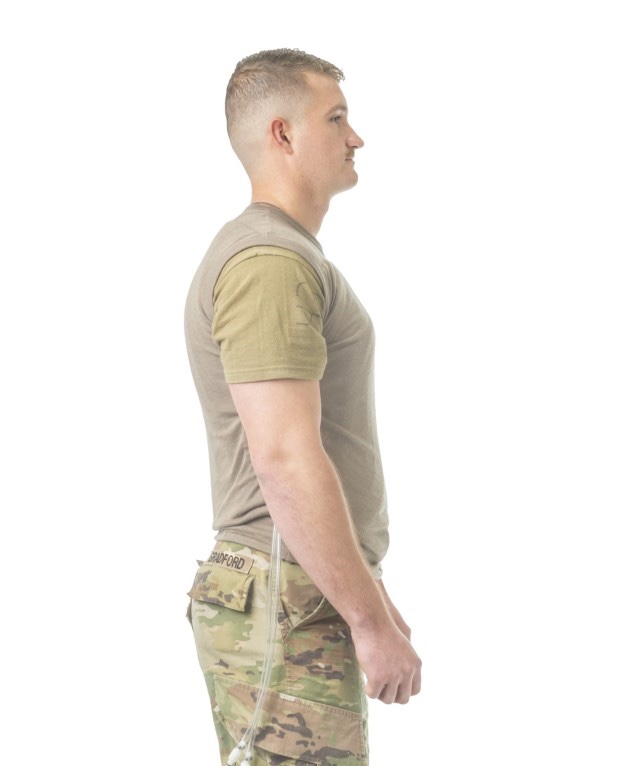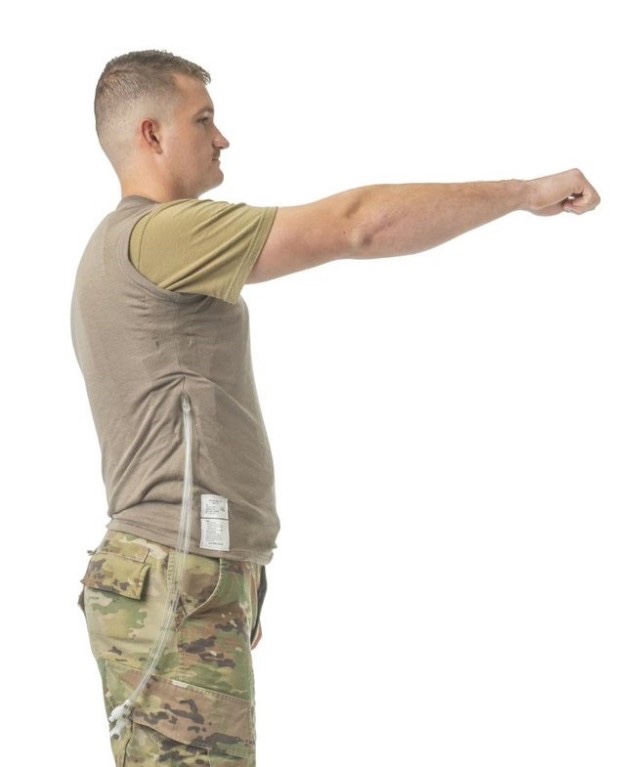NATICK, Mass. — The U.S. Army Combat Capabilities Development Command Soldier Center, or DEVCOM SC, is supporting the development of new liquid cooling garments for prolonged in-field use. The cooling garments, a component of the microclimate cooling system, will help protect Soldiers from overheating, a condition that can lead to diminished cognitive and physical performance, heat injury, and in extreme cases, death.

The new garments are an improvement over the existing microclimate cooling garment, or MCG, and the environmental control vest, or ECV.

“The newly developed thermally conductive flame-resistant cooling vest, liquid cooling garment, is significantly — nearly 30 percent — more efficient in extracting body heat than the currently fielded ECV, and the new garment is 15 percent lighter,” said Joe Salmeron, a project engineer at DEVCOM SC. “With a higher heat extraction rate, warfighters are likely to have reduced thermal burden. This could lead to carrying fewer batteries and allow more time for mission execution.”
The liquid cooling garment, or LCG, can be seamlessly integrated into any protective garment using a cooling vest, including the Joint Science and Technology Office for Chemical and Biological Defense of the Defense Threat Reduction Agency-funded S&T developing system, the Tactical All-Hazards Ensemble.
DEVCOM SC led the effort for the Phase II Enhancement of a Small Business Innovation Research agreement. Through the Small Business Innovation Research program, the Defense Threat Reduction Agency and the U.S. Army Acquisition Support Center Air Warrior group contracted the small business, Oceanit. Oceanit was tasked with developing a high-performance, lightweight LCG.
Through this effort, Oceanit has created a highly effective cooling vest by incorporating its proprietary tubing material, Thermocore®. The tubing material’s thermal conductivity matches that of the human body, enabling effective heat transfer between the body and the coolant in the tubing.
DEVCOM SC and the U.S. Army Research Institute of Environmental Medicine, or USARIEM, worked jointly to provide testing support that played a key role in the product’s development. DEVCOM SC and USARIEM conducted thermal manikin testing and modeling simulations to measure physiological thermal burden.
Due to the garment’s improved compressive fit, the garment doesn’t add bulk or negatively impact mobility. The garment also features custom manifolds that allows for the inclusion of additional items such as shorts, pants, sleeves, and cap.
The new garment is part of DEVCOM SC’s larger commitment to improving Soldier protection and performance while increasing lethality.
“Knowing that the cooling garments can make a difference for the warfighter by reducing heat injuries is very rewarding,” said Pratibha Sinha, DEVCOM SC’s project lead for the microclimate cooling program.
Story by Jane Benson, DEVCOM Soldier Center Public Affairs
Photos by David Kamm


Recently someone asked me how so many PMs, keep their jobs for such a long time? I didnt have an answer..
the very next week a PM told me that he was adding projects to his list of potential efforts to keep his job going. He had worked on packs and load bearing project now was onto survival equipment…
Years ago a Solar Power collecting shirt made it to such a list, never seen it deployed.
How do we put term limits on PMs?
I was waiting to see a development like this. Given the proliferation of powered/nonpowered exoskeletons. I am sure everyone is busy building non powered suits and slapping ar650 armor plates on them while setting up small power systems for HUDs and a major issue at least in the sci-fi worlds of battletech etc. is heat buildup from weapons and the pilots used liquid cooling clothing/vets etc. to help with it. Power armor is definitely the future and will absolutely dominate urban combat.